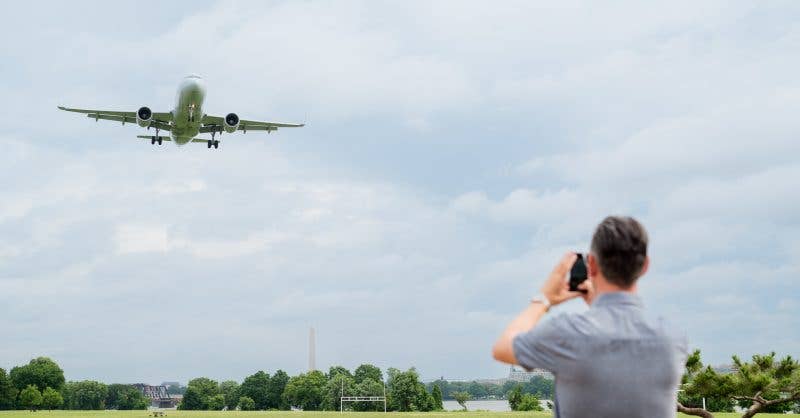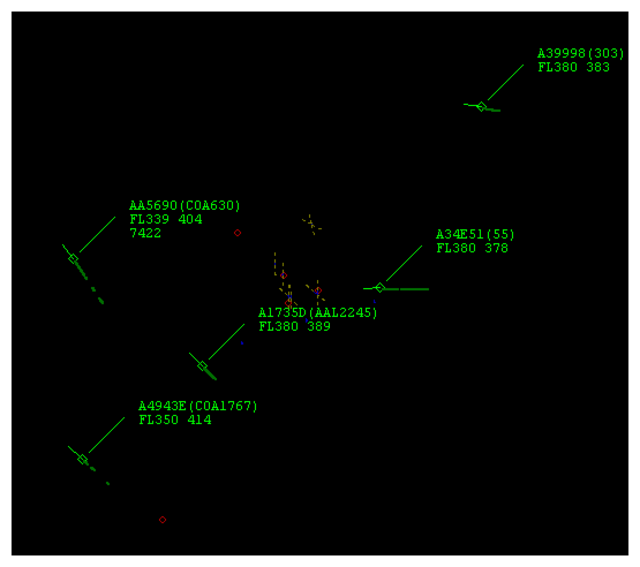Probable Cause #34: Complacency Kills
A low-time pilot elects to fly into deteriorating weather at night and without an Instrument Rating. The result was predictable.
The first few hundred hours of any pilot's flying career are the ones involving the greatest accumulation of experience and judgment. In some ways, it's a miracle any of us survive this period; in other ways, these first few hours of flying time are both necessary and something of a rite of passage. In any event, a new Private Pilot's objective should be to get through them without bending sheet metal or bones. He or she should take few risks and concentrate on learning about making decisions, conducting proper pre-flight planning, developing various in-flight routines and constantly monitoring a flight's progress. A healthy respect for weather doesn't hurt anything, either.Once we "graduate" from these first few hundred hours, we can go on to earn our Instrument Rating, a Commercial Certificate or much more. But first we have to get through the challenges inherent in being on our own.Perhaps the greatest challenge to our health and safety during this period is complacency. After all, we've got a piece of paper that says we can fly, take passengers, travel from point A to point B at will and be the master of our destiny. No less authority than the federal government has decreed we are qualified to get into an airplane and fly it pretty much where and when we want. So, what is there to worry about?The problem with this scenario is that we don't know everything so early in our flying career -- veterans with thousands of hours of jet time confess they don't know everything, either -- and we may not recognize certain warning signs for what they are.No matter how well things are going, taking various things for granted -- the engine will always run, there will always be fuel in the tanks, the radios will always work, the weather at our destination will always be the same as it was when we left -- can be our undoing.
Background
Complacency can be a harsh teacher. A good example of its lessons occurred on February 14, 2003, near Wellington, Kan., when a Cessna 172N flown by a 150-hour Private Pilot crashed. The airplane was destroyed and the solo pilot fatally injured. Instrument conditions prevailed in the area at the time of the flight, which was returning to the pilot's base at the Augusta (Kan.) Municipal Airport (3AU) from the Wiley Post Airport (PWA) in Oklahoma City, Okla. The Skyhawk departed PWA at about 1745 local time after dropping off two passengers.Earlier, at 1405 local time, the Wichita Automated Flight Service Station provided a weather briefing to the accident aircraft's pilot for the flight from 3AU to PWA. During that briefing, the pilot was told of generally good VFR, with scattered clouds at 2000 to 3000 feet AGL and winds gusting to 24 knots. As the NTSB's final report noted, there was no record of a briefing prior to departure from PWA.The two passengers who accompanied the pilot from 3AU to PWA later reported an uneventful flight with relatively good weather. Upon arrival at PWA, one passenger remarked to the pilot about a line of clouds visible to the northeast, toward Wichita. In response, the pilot reportedly said that the clouds were probably higher than they appeared to be.
En Route
About 30 minutes after departing PWA for the return trip, the pilot contacted the Kansas City Air Route Traffic Control Center (ARTCC) to request VFR flight following. At that time, the Skyhawk was approximately 30 miles north of Oklahoma City. Subsquently, the pilot twice asked the controller to confirm his location. During the first request, the pilot stated that it "got a little bumpy" at 3500 feet and that he "got bounced around pretty hard."Presumably because of the flight's relatively low altitude, radar contact was subsequently lost. It was reestablished at 1943, when the flight was 55 miles south of Wichita. The pilot reported an Interstate highway in sight at that time.Flight-following services were transferred from the Kansas City ARTCC to Wichita Approach at 1945. During the handoff conversation, the ARTCC controller remarked to the approach controller, "You might want to keep an eye on [the accident flight] ... he sounds kind of shaky."Shortly after Wichita Approach assumed responsibility for flight following, at 1948, the pilot reported: "I'm going to have to drop down. I went into cloud cover here [at] three thousand five hundred feet." After receiving various weather reports from Approach Control, the pilot elected to divert to nearby Strother Field Airport (WLD). However, radio and radar contact were lost about 1955.At about the time of the accident, a motorist traveling northbound on I-35 reported noticing an aircraft flying northbound parallel to the Interstate. A few minutes later, he stated he saw the aircraft traveling to the southwest. Finally, he reported seeing the same aircraft a third time, crossing the Interstate from west to east and descending at an approximate 45-degree angle. According to the witness, the aircraft was traveling at a high speed but appeared to be in stable flight. The witness reported thinking at the time that the aircraft was approaching to land at a private airstrip.The motorist further reported that weather at the time was very windy and gusty, with a low overcast he estimated at 200 feet AGL with good visibility below the cloud bases.Subsequent investigation at the crash site did not uncover any mechanical anomalies with the airplane or reveal any medical problems which could have caused the pilot to lose control of the airplane.
Weather
As noted, instrument conditions prevailed in the Wichita area at the time of the accident. In fact, an Airmet in effect at the time of the pilot's weather briefing warned of a possibility of instrument weather conditions north of a line running from Oswego, Kan., to 50 miles west of Liberal, Kan. This line is nearly coincident with the Kansas -- Oklahoma border and included the destination airport, 3AU. The Airmet noted the possibility of those conditions spreading eastward and continuing through 2100.An additional Airmet noted the possibility of moderate turbulence below 8000 feet spreading east-southeastward and continuing through 2100 local time.The Wichita area terminal forecast noted a possibility of thunderstorms and light rain under a 1500-foot broken ceiling with cumulonimbus clouds from 1500 through 1800. At the time of the accident, the Wichita Mid-Continent Airport -- 28 nm north of the accident site -- reported northerly winds gusting to 19 knots, an overcast at 500 feet AGL and visibility of 10 sm.The pilot of an aircraft conducting practice instrument approaches near Wichita at the time of the accident reported cloud tops of between 3000 and 3500 feet msl. He noted that, although there was a nearly full moon visible, it was somewhat hazy and there was not much of a horizon. The overcast layer was nearly continuous according to the pilot.Sunset in the Wichita area occurred at 1807 on the day of the accident. The end of civil twilight was at 1834.
Probable Cause
The NTSB determined the probable cause of this accident to be "spatial disorientation experienced by the pilot and his subsequent failure to maintain control of the aircraft. Contributing factors were the pilot's failure to obtain an updated preflight weather briefing prior to the return flight, his attempted flight into known adverse weather, the lack of lighting (night) and the low ceilings." Which is as it should be. But that finding doesn't tell the full story, nor does it really help us learn from this accident.We can presume that the AFSS briefer notified the accident pilot of the Airmets in effect for turbulence along the route of flight and for IFR conditions at his destination. We can also presume that the pilot did the math and realized he would be flying at night, in deteriorating weather. Perhaps the idea of flying at night did not deter him, since the NTSB reports he had accumulated some 35 hours of night flight time. He also had logged 3.6 hours on simulated instruments, but had no actual instrument flight time.It's also not known why the pilot elected to stay so low on his return flight. The winds could have favored a low-altitude flight, but a climb would likely have kept him out both the clouds and the turbulence.In the end, however, this pilot appeared overly confident of his abilities, given the weather and the time of day. Not obtaining a briefing for his return flight demonstrates complacency typical of a low-time pilot who doesn't know how much he doesn't know.
More accident analyses are available in AVweb's Probable Cause Index. And for monthly articles about safety, including accident reports like this one, subscribe to AVweb's sister publication, Aviation Safety.






